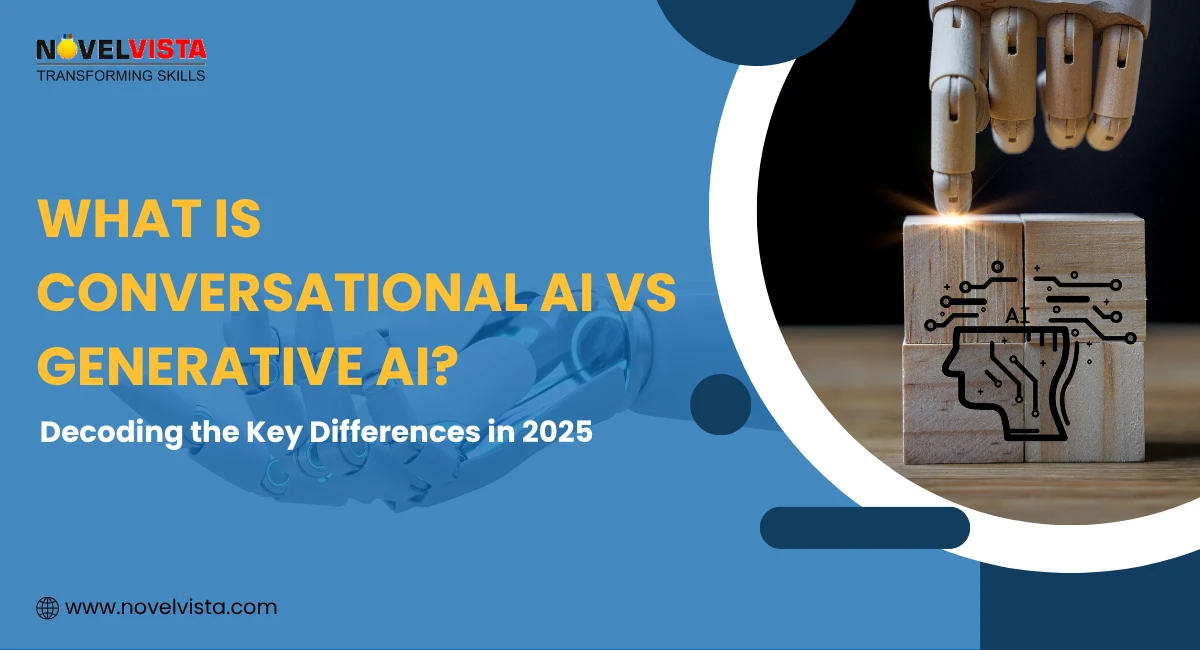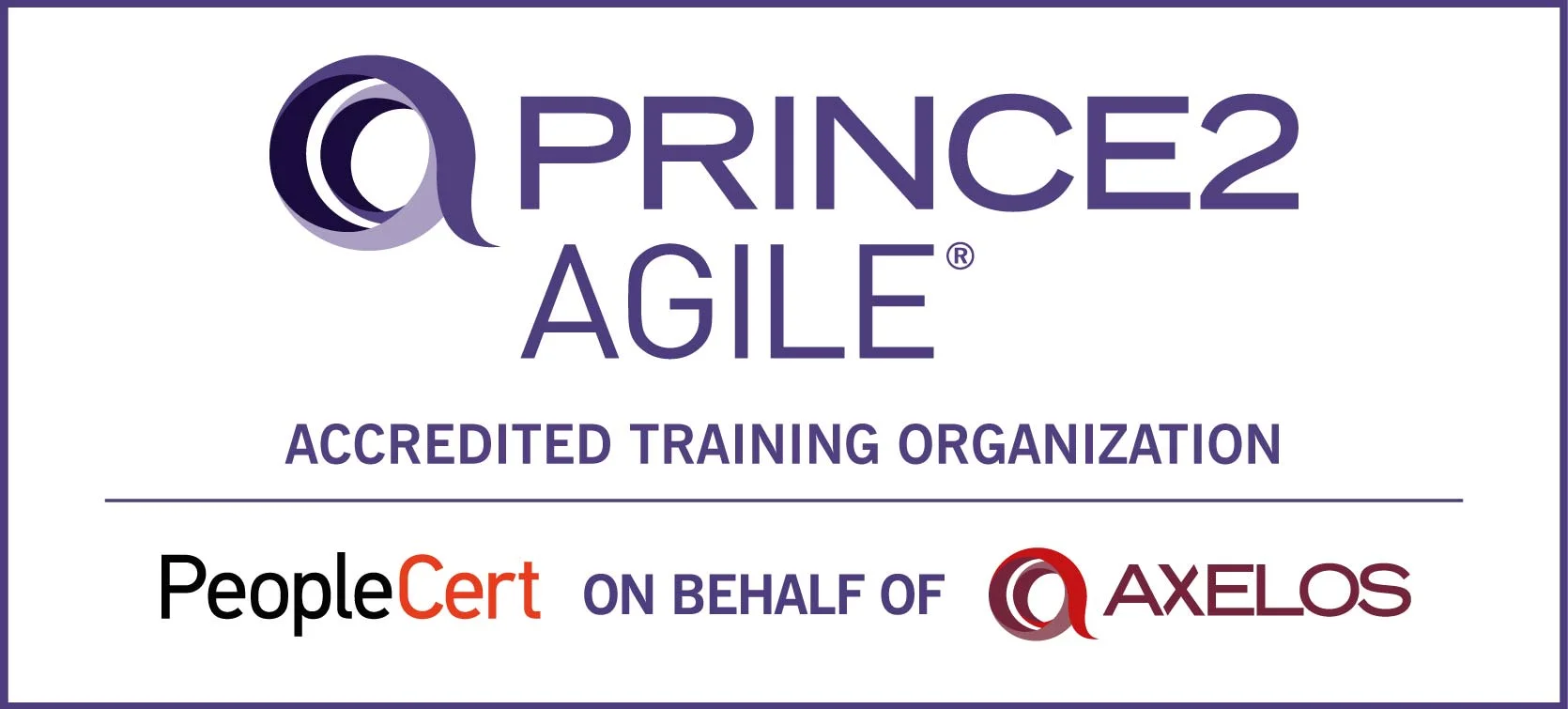- Understanding Conversational AI vs Generative AI
- Conversational AI vs Generative AI: Key Differences Explained
- How Conversational AI and Generative AI Are Transforming Businesses in 2026
- Challenges and Ethical Considerations in Conversational and Generative AI
- Step-by-Step AI Implementation Roadmap: Conversational AI vs Generative AI
- Final Takeaway
In 2026, Artificial Intelligence (AI) is evolving faster than ever, changing how we interact, work, and create. Two of its most popular branches—Conversational AI and Generative AI—often get compared, but they serve very different purposes. Conversational AI powers chatbots and virtual assistants that can talk naturally and understand context, while Generative AI goes a step further by creating new content like text, images, and even videos using advanced models such as GPT and DALL·E.
Conversational AI vs Generative AI – the distinction between these two AI types can be confusing. While conversational AI is designed to engage in structured dialogues with users, generative AI goes a step further by creating entirely new content, whether it’s text, images, or even code.
Understanding the difference is crucial for businesses to make the right AI investments and avoid missed opportunities. Let’s clarify the core differences between Generative AI vs Conversational AI, highlight real-world use cases, and help you determine which AI best aligns with your business goals.
Many people today search for “Conversational AI vs Generative AI differences” or “Which AI is better for businesses in 2026?”—and this blog breaks it all down. We’ll explore how these two technologies work, where they differ, and how each is shaping the future of AI-driven innovation.
Understanding Conversational AI vs Generative AI
Conversational AI
Conversational AI refers to technologies that allow machines to understand, process, and respond to human language in real-time. This type of AI is primarily driven by Natural Language Processing (NLP), which enables machines to have conversations with users, whether that’s through text or voice.
Core tech behind conversational AI:
- Natural Language Understanding (NLU): Helps the system interpret user intent.
- Intent detection: Recognizes what the user wants.
- Dialogue management: Ensures conversations flow smoothly.
Examples: Virtual assistants like Siri, Alexa, and Google Assistant are all powered by conversational AI, helping users perform tasks, ask questions, and more.
Quick Insight: The global conversational AI market is projected to grow from $10.7B in 2023 to nearly $29.8B by 2028, yet 50% of leaders still can’t clearly distinguish it from generative AI.
(Source: Global News Wire)
Generative AI
Generative AI is a type of AI designed to create new content from learned patterns. Unlike conversational AI, which focuses on interaction, generative AI is about content creation, from generating text to images, music, or even code.
Core tech behind generative AI:
- Large Language Models (LLMs): Trained on vast amounts of text data to generate coherent text.
- Generative Adversarial Networks (GANs): Used to create new, realistic images, music, and more.
- Autoregressive Models: Focus on predicting the next part of a sequence (e.g., generating the next word in a sentence).
Examples: GPT-4, DALL-E, and MidJourney are all examples of generative AI, capable of creating realistic content based on prompts.
Pick the Right AI Strategy—Fast. Smart. Confident.
Stop the guesswork—use a proven framework.
✔ Find the right AI for your goals
✔ Avoid costly mistakes
✔ Compare ROI, scalability & more
Decide with clarity!
Conversational AI vs Generative AI: Key Differences Explained
Here’s a quick comparison to help you grasp the key differences:
Feature |
Conversational AI |
Generative AI |
|
Purpose |
Enhances user interaction (e.g., chatbots) | Creates new content (text, images, code) |
| Inputs | User queries, voice/text interactions |
Data, prompts, or images |
|
Outputs |
Responses, recommendations, or actions | Text, images, videos, and other assets |
|
Training Data |
Conversational data, user intents | Large datasets (text, images, etc. |
|
Use Cases |
Customer service, virtual assistance, help desks | Content creation, marketing, design, code |
How Conversational AI and Generative AI Are Transforming Businesses in 2026
Conversational AI for Customer Support and HR Automation
Conversational AI is a game-changer in customer support. Think chatbots on websites, voice assistants in call centers, and automated responses to help desks. With AI-powered chatbots, you can answer customer queries quickly, reduce response time, and automate repetitive tasks.
Examples:
- HR bots for employee queries.
- Customer support bots for 24/7 assistance.
- Virtual assistants are helping users make purchases.
Generative AI for Content Creation, Design, and Code Generation
Generative AI is transforming the creative and marketing industries by automating content creation. From generating blog posts to designing logos, it can create assets at scale. Whether you’re in marketing, design, or content creation, generative AI can produce high-quality, engaging content based on simple prompts.
Examples:
- Content marketing: Blogs, social media posts, and articles.
- Design: Logos, website mockups, and product designs.
- Code generation: Automated development of software code.
Combined Use – Enhanced Assistants Using Generative Modules
Imagine combining both AI technologies: Conversational AI + Generative AI. With generative modules integrated into a conversational assistant, you can elevate the interaction by allowing it to create content on demand during a conversation. Siri, for example, could not only answer your questions but also help you generate an email or article.
Challenges and Ethical Considerations in Conversational and Generative AI
While AI technology offers immense potential, it’s important to be aware of the pitfalls:
 Common Issues:
Common Issues:
- Hallucinations: Generative AI models, like GPT, might generate nonsensical or misleading content. This is commonly known as “hallucination” in AI, where the model invents information that isn’t factual.
- Bias: Both conversational and generative AI systems can perpetuate biases embedded in their training data. If the training data reflects biases, whether cultural, racial, or gender-based, the AI can unintentionally amplify those biases in its outputs.
- Privacy Concerns: AI models often rely on vast amounts of data, and improper handling of this data can lead to privacy violations. Conversational AI systems, in particular, often handle sensitive user data (e.g., personal details, conversation history), making it crucial to follow data protection regulations like GDPR.
- Lack of Transparency: AI models, especially generative AI, are often black boxes. The lack of transparency in how these models generate outputs makes it challenging to understand how they arrive at certain conclusions or responses, raising concerns about accountability.
- Misinformation & Deepfakes: Generative AI, especially in the context of image or video generation (e.g., Deepfake technology), can be used to create misleading content, making it difficult for users to discern fact from fiction. This can be especially dangerous in areas like politics or social media.
- Ethical Use in Content Creation: As generative AI begins creating text, images, or even music, it raises questions about ownership and authorship. Who owns content generated by an AI model, and how does this affect creators and intellectual property rights?
- Job Displacement: The increasing use of AI for automation, particularly in tasks like customer service or content creation, raises ethical concerns around job displacement. As AI takes over routine and creative tasks, workers in specific sectors might be at risk of losing their roles.
- Over-Reliance on AI: Organizations must be cautious about becoming too reliant on AI systems. Overuse of AI in critical areas like healthcare, finance, or customer support can lead to problems if the system fails or produces incorrect results. A balance between human oversight and automation is essential to avoid these risks.
Guidelines to Address These Ethical Concerns:
- Implement Guardrails: Ensure AI systems have clear ethical guidelines to follow and prevent the generation of harmful or biased content.
- Human-in-the-Loop Processes: For sensitive or high-risk applications, it’s essential to keep humans in the decision-making loop to review and correct AI outputs when necessary.
- Regular Audits & Monitoring: Continuously audit AI models for biases, performance, and ethical adherence, adjusting them as needed to ensure they remain aligned with company values and regulatory standards.
- Transparency & Accountability: Ensure AI systems are explainable and provide clear reasoning for their outputs. This can help establish trust and accountability.
Step-by-Step AI Implementation Roadmap: Conversational AI vs Generative AI
Assess Goals → Choose AI Type
Start by evaluating your organization’s needs. Do you need an AI that enhances user interaction and support (Conversational AI), or are you looking to generate creative content, like blogs, images, or code (Generative AI)? Identifying your goal will help you choose the right AI to deploy in your operations.
Tactical Pilot → Scale
Once you've decided on an AI type, start with a small pilot project. This could involve automating a specific customer service query or generating marketing content for a campaign. By testing in a controlled environment, you’ll be able to assess how the AI fits into your workflow before scaling it to a larger project or organization-wide deployment.
Measure KPI Improvements (e.g., Response Time, Content Throughput)
After your pilot, track key performance indicators (KPIs) to measure success. Some important KPIs for both Conversational AI and Generative AI include:
- Response Time: For conversational agents, this measures how quickly the AI responds to user queries.
- Content Throughput: For generative AI, how quickly and efficiently content is produced and deployed.
By monitoring these KPIs, you can see whether the AI is delivering the expected value and identify areas for improvement.
Final Takeaway
Understanding the Conversational AI vs Generative AI isn’t just academic; it’s essential for making the right investments. By choosing the appropriate AI for your needs, piloting with intent, and measuring results, you can achieve meaningful improvements in efficiency, innovation, and customer satisfaction.
Start with clarity, scale with confidence, and let AI transform your business operations.
Frequently Asked Questions
Author Details

Akshad Modi
AI Architect
An AI Architect plays a crucial role in designing scalable AI solutions, integrating machine learning and advanced technologies to solve business challenges and drive innovation in digital transformation strategies.
Course Related To This blog
Certified Generative AI in ITSM
Certified Generative AI Expert
Generative AI in Project Management
Generative AI in Retail
Generative AI in Marketing
Generative AI in Finance and Banking
Generative AI for HR and L&D
Generative AI in Cybersecurity
Generative AI in Software Development
Confused About Certification?
Get Free Consultation Call









